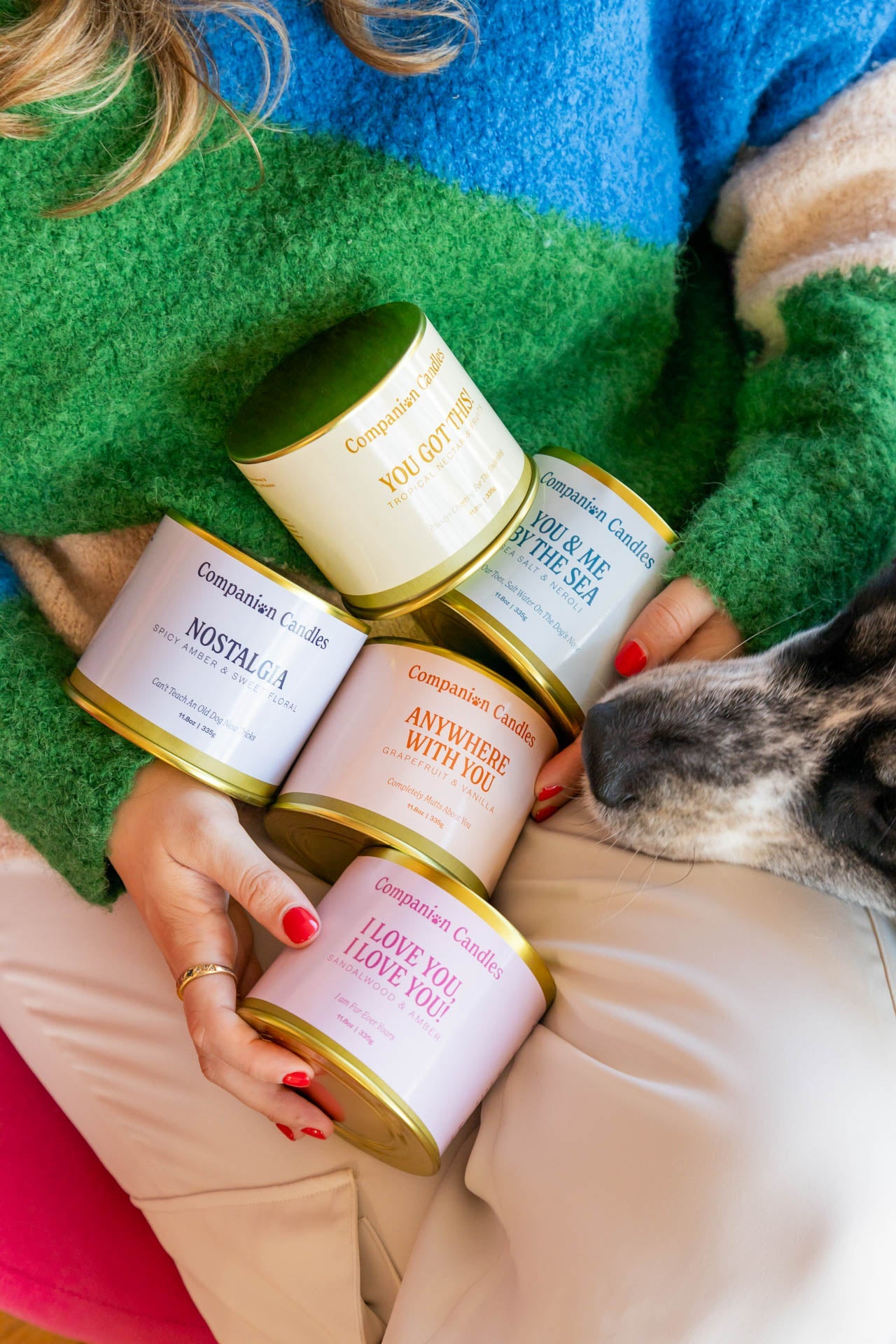

· By Loren Lewin
What Are the Most Toxic Ingredients in Candles?
Candles are meant to soothe us. But what if the candle you just lit is quietly polluting your home?
While they may smell amazing, many traditional candles are made with harmful ingredients that can impact the health of you and your pets. From carcinogens to endocrine disruptors, these invisible toxins can linger in the air long after the flame goes out.
Here are the most toxic ingredients commonly found in candles—and what to burn instead.
1. Paraffin Wax
Why it's used: It's cheap, widely available, and holds fragrance well.
Why it's bad: Paraffin is a petroleum byproduct. When burned, it can release benzene and toluene—both classified as known carcinogens by the EPA. It also creates black soot, which settles on walls, surfaces, and in your lungs.
Better option: Coconut wax, soy wax, or beeswax (we use coconut-soy blends at Companion Candles for a clean, even burn).
2. Phthalates
Why they're used: To make synthetic fragrances stronger and longer-lasting.
Why they're bad: Phthalates are hormone-disrupting chemicals linked to asthma, reproductive harm, and developmental issues. They can be especially dangerous to children and pets, who have smaller, more sensitive systems.
Better option: Phthalate-free, IFRA-compliant fragrances that are formulated with safety in mind.
3. Synthetic Dyes
Why they're used: To make candles bright, colorful, and "eye-catching."
Why they're bad: These dyes can release toxic fumes when burned and offer no real benefit beyond appearance. They can also be irritating to pets and allergy-prone humans.
Better option: Skip the dyes altogether or opt for naturally pigmented waxes. All Companion Candles are dye-free.
4. Lead or Metal-Core Wicks
Why they were used: To help the wick stand upright and burn evenly.
Why they're bad: Though banned in the U.S. in 2003, lead-core wicks still pop up in imported or older candles. Burning them can release lead into the air—a neurotoxin that has no safe exposure level.
Better option: Cotton or wood wicks, like the ones we use in every Companion Candle.
5. Undisclosed Fragrance Ingredients
Why they're used: Because the term "fragrance" is considered a trade secret in the U.S., brands aren't required to disclose what's actually in their scent blends.
Why it's bad: That single word can hide hundreds of unregulated chemicals, including respiratory irritants and allergens. If a brand isn't transparent, that's a red flag.
Better option: Brands that list their fragrance ingredients or commit to non-toxic, pet-considered formulations (like us!)
Why This Matters for Pet Parents
Pets live closer to the ground, where heavy fragrance particles settle. They also groom themselves by licking fur and paws, which means they can ingest whatever toxins land on them. Candles that aren’t pet-safe can lead to:
-
Sneezing, coughing, or wheezing
-
Skin irritation or excessive grooming
-
Long-term health issues with chronic exposure
At Companion Candles, we removed over 250+ harmful ingredients to create candles that are clean-burning, pet-considered, and genuinely safe to use in your home.
Because your pet isn’t just part of the decor—they’re part of the family.
Want candles without the harmful stuff?

